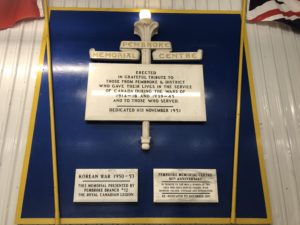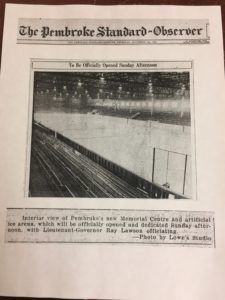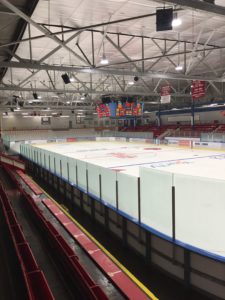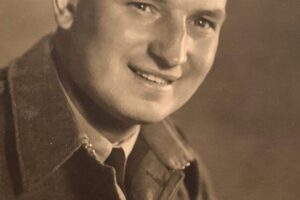It has been seven decades since the Pembroke Memorial Centre opened its doors. The official opening was led by Ontario’s Governor General, Ray Lawson, on November 11, 1951 when close to 5,000 people attended a special Remembrance Day Service to christen the new building that was a memorial to the Pembroke area’s war dead from the First and Second World Wars.

Three days later, the Montreal Canadiens came to town to play an exhibition game against the Pembroke Senior Lumber Kings. It was an incredibly proud time in Pembroke’s rich hockey history, but the road to build the Memorial Centre was anything but easy. It took three community fundraising campaigns, a bold move by Pembroke town council, and a lot of volunteerism to make it happen, but as 1950 arrived, a year after the sod had been turned announcing plans to build the arena, it was unclear if the building would be finished.

In a booklet produced for the final push to raise funds for the project, the case was clearly laid out with an undertone of guilt weaved into the message in a promotional booklet that was widely distributed throughout the region. “The question to be answered in these next few weeks is whether we shall abandon this skeleton as being the extent of our regard for the heroism and sacrifice made by our veterans. It has been determined that “THIS IS IT.” This campaign for funds must be successful or no further attempt will be made to provide a Memorial Centre for this area.”
While the campaign entitled “Donate to Commemorate” had some success, it still left a gap in the money needed to complete the building and it forced Pembroke Town Council into a gutsy decision. The council determined the only way to complete the project was to borrow the money from itself and so on October 2, 1950 a referendum was held to give the town the permission it needed to debenture $125,000. With the building shell in place, the decision on whether the Memorial Centre would be completed would be left in the hands of taxpayers.
Voting hours were extended into the evening to allow as many of the 3200 eligible ratepayers to cast ballots in the plebiscite. About 50 percent of them did, many likely influenced by a full-page advertisement that appeared in the Pembroke Standard Observer the day before the vote.
The ad read, “It would not be taking a progressive attitude to vote against this by-law and thus hold the project at a standstill. On the day of the vote, the town council and fundraising committee held its breath, but when the votes were counted the road was cleared for the project to be completed. The taxpayers had voted 892 to 502 in favour of allowing the town to borrow money and to set up a Commission to operate the new facility.

The Chair of the General Fundraising Committee, Claire M. Brunton, told the Ottawa Journal, “The outcome was most gratifying and it proved in no undecided manner that Pembroke wanted the Memorial Centre.”
The secured funding would cover the costs of the artificial ice making plant, the seating, lighting, plumbing, heating and dressing rooms. By the fall of 1951, Pembroke would have its new auditorium ready to host both the junior and senior Lumber Kings hockey teams, public skating, minor sports and many community activities like trades fairs, circuses, political conventions, and concerts.

Just prior to the official opening of the building, the Commission Chair, C.M. Rattray penned a letter to the local newspaper, imploring that this was just the beginning. He had not lost site of the original vision for the Memorial Centre which was much larger in scope. It had called for a seating capacity of 3,146 fans, a swimming pool, a memorial hall and offices.
“While the present building to all intents and purposes is completed and in operation, it might be well to recall in our minds that this must be considered only phase one of our building program. In the years ahead, if this is to be considered a community centre in every sense of the word, there is still much work to be done.”
Rattray went on to write, “In its location and construction, space is provided for a full-sized swimming pool, for an auditorium to seat some 600 to 800 people, provision for town offices leading off a large rotunda, fully equipped banquet hall with rooms for meetings and conferences. In the landscaping, outside provision is made for a quarter mile cinder track enclosing a parking lot for some 800 cars, tennis courts, etc.”

It was indeed a grand plan, but one the town could not afford. When it was built the Memorial Centre cost $310,000. It has proven to be a great investment as it celebrates its 70th anniversary and continues to be the focal point of the community.




















